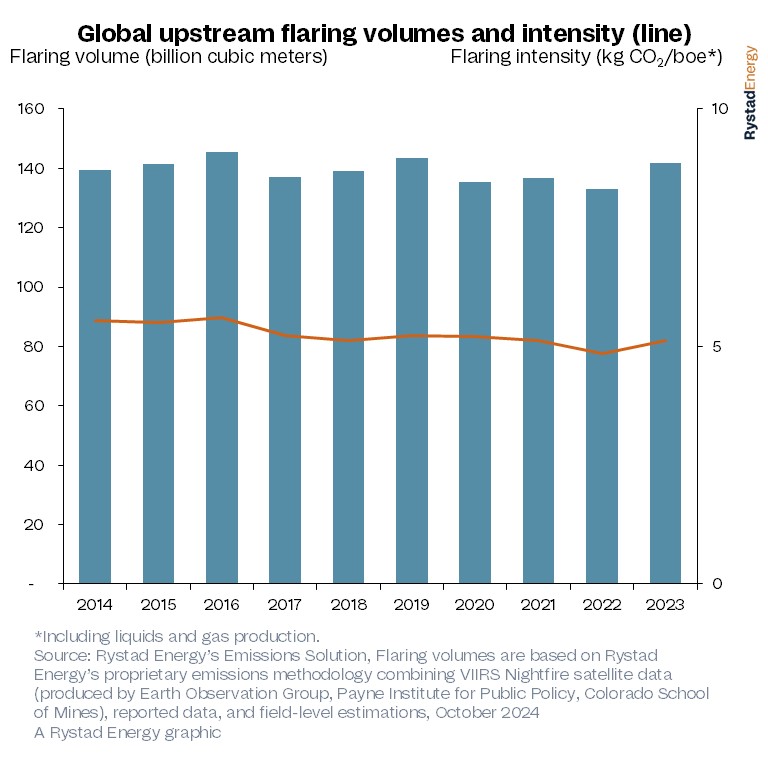**Flaring Emissions on the Rise: A Step Backwards in Industry Efforts to Reduce Emissions**

The upstream oil and gas sector is facing a significant challenge as flaring emissions have begun to increase, contrary to the trend observed just a few years ago. This rise in flaring emissions is particularly concerning as it highlights the inefficiencies and operational shortcomings within the industry.
Recent data from Rystad Energy reveals a 7% increase in global flaring emissions from 2022 to 2023. This increase is primarily attributed to operations in the Middle East, Africa, and Russia. Among these regions, the Middle East notably saw a 7% rise in flaring, with a cumulative total of 45 billion cubic meters (Bcm) of natural gas flared in 2023 alone. Russia led individual countries with 28 Bcm flared in 2023, marking a 12% year-over-year increase.
The rise in flaring emissions underscores the complexities and challenges the industry faces in reducing its overall carbon footprint. Despite the overarching goal of diminishing environmental impact, routine flaring continues to be a significant issue.
**Challenges and Solutions**
Rystad’s analysis highlights that while nonroutine flaring is essential for safety and operational procedures, routine flaring remains a major source of greenhouse gas emissions. The global upstream sector is responsible for approximately 1 billion metric tons of CO2 emissions annually, with flaring accounting for about 30% of the total. This statistic represents nearly 140 billion cubic meters (Bcm) of gas flared globally each year over the past decade.
“Flaring reduction is considered a low-hanging fruit for oil and gas companies trying to reduce their carbon footprint,” Magnus Kjemphol Lohne, Senior Vice President of Energy Systems Research at Rystad, emphasized. “However, the recent uptick underscores the challenges facing the industry, particularly in key producing countries such as Russia, Iran, and Iraq.”
The regions with the highest flaring intensity include Venezuela, which emits almost 40 kilograms of CO2 per barrel of oil equivalent (BOE), significantly higher than the global average of 5 kg CO2/BOE.
**Path Forward**
To address the rising trend in flaring emissions, the industry must prioritize reducing routine flaring activities. This can be achieved by improving operational efficiency and leveraging advanced technologies to minimize gas releases.
Rystad’s data emphasizes that saturated energy markets, such as the Permian Basin








